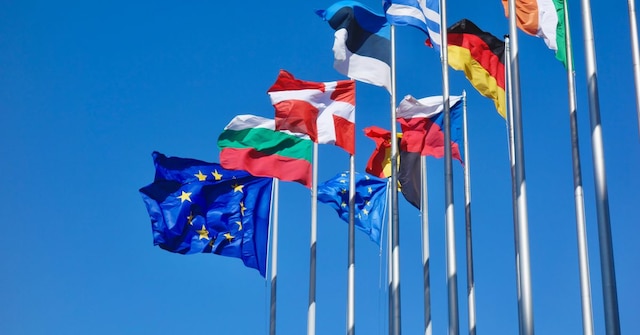What the MiCA Bill Could Mean for the Future of Decentralization

On Oct. 10, the Markets in Crypto-Assets (MiCA) bill was passed, with 28 members of the European Union Parliament voting in favor. The new legislation addresses key crypto elements such as consumer protection, anti-money laundering (AML), environmental impact and business accountability.
The European Parliament is due to vote on MiCA before the year’s out, at which point the bill will become law within 12 to 18 months. Unfortunately, the proposed legislation could mean many decentralized finance (DeFi) entities are going to struggle to operate effectively in Europe.
Zac Colbert is a financial writer.
MiCA is expected to come into effect in 2024. According to the proposed new law, only assets that are pegged to the euro and completely backed 1:1 are permitted, basically making algorithmic stablecoins and those pegged to anything else illegal.
Furthermore, the bill imposes a hard cap of 200 million euros worth of daily trading volume – a number much lower than most markets trade. It is here that MiCA restricts European crypto companies’ potential for both innovation and competition.
The EU claims MiCA will encourage adoption through regulation, yet more reliable digital assets such as stablecoins are restricted by the bill. Mathieu Hardy, from asset management app OSOM, feels there’s almost a tech-based discrimination when it comes to foreign currencies.
“There’s a cap on the amount of tokenized [U.S. dollars] which can be traded for crypto assets, but there are no caps on the amount of non-tokenized USD that can be traded for crypto assets or traditional assets. This broad discrimination of USD e-money tokens is very likely to make the operations of CASPs [Crypto Asset Service Providers] more complicated while offering little protection to monetary sovereignty.”
To say regulation will limit innovation is almost redundant now. But the pain point unique to MiCA is the way in which the bill actively shapes the crypto space in future.MiCA is supposedly written with the user in mind, but the wording and sheer amount of text focused around anti-money laundering (AML) rules is indicative of its true agenda. In terms of consumer protection, having a framework such as MiCA is great, but when consumer protection is achieved by making it so expensive to operate a crypto company in Europe that only well-established ones can do it, MiCA is hurting consumers in the long run.
“There’s very little done to ensure that operations of CASPs are technologically secure, but there are plenty of provisions around anti-money laundering and monetary sovereignty. Which feels a little out of order for an asset class that is mostly adopted by retail investors and represents around 1% of the world’s total assets,” says Mathieu.
It’s certainly not all bad news, though. MiCA does make some positive headway with Virtual Asset Service Providers (VASP). VASPs such as cryptocurrency exchanges, decentralized exchanges and over-the-counter (OTC) trading platforms will have to provide a range of protections for their customers, as well as implement protocols to monitor for insider trading.
MiCA does well to bring crypto company regulations in line with the same framework governing banks. The EU hopes that providing consumers and companies clear legal protections when interacting with these platforms will encourage a higher flow of capital into the market. Many feel regulation lends an air of legitimacy to the crypto space, so would-be investors are converted from consideration to adoption.
With the speed of the market, it can be difficult to pin down accurate definitions in the world of decentralized finance, let alone a narrow set of legal rules that regulate complicated financial processes. And MiCA is guilty of this, still yet to provide specific clarification for many blockchain-based entities.
Decentralized autonomous organizations (DAO) that are decentralized in name only could have a short future. Numerous entities market themselves as decentralized, yet have legal persons who directly or indirectly control the organization through voting rights, tokens or smart contracts.
Arguably, organizations governed by rules embedded into the code and recorded on the blockchain don’t need managers, HR departments and the inevitable bureaucracy. The smart contracts on which they're built, and the open ledger of the blockchain, provide audit trails for the financial authorities.
Purist DAOs, as well as the established and generously backed projects, will survive. But the start-ups, low-capital companies and organizations that feign decentralization could seriously struggle in the tighter, limited landscape post-MiCA.
And that’s a real shame, because in the world of digital assets sometimes chaff can grow into wheat. Unfortunately, MiCA might cut these projects down before they’re given a chance.
